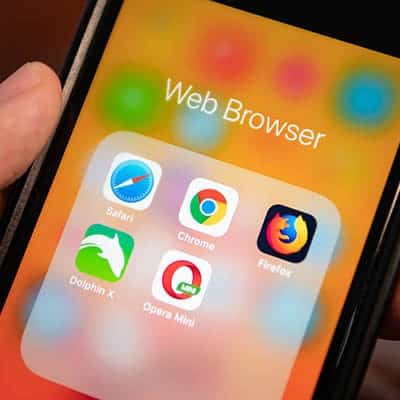Why Is Everyone Swiping? When payday comes once a week or once every two weeks, how do you receive your paycheck? More than half of the US utilizes and relies on direct deposit. It’s no wonder cash has become a scarce payment method. Convenience is such a powerful underlying reason to ditch cash payment. What are the pros, and what are the cons to this convenience? Let’s first talk about some of the pros. Security! Surely, not carrying a wad of cash in your pocket is a more secure method, right? Well, that depends on the type of card you’re carrying as well as the coverage the lender has agreed to. If you have ever hidden something of value from yourself such as your license, cash, your wallet, or even car keys, then you know how it feels to be worried about your belongings. If you’ve ever fully lost one of these objects, you’re not the only one. So how would you proceed if you lost a few hundred dollars cash that was in your wallet? Well, this is where you discover the fact that a credit card is typically a superior payment method. Borrow protection has become a standard in most lender scenarios. Most banks are FDIC (Federal Deposit Insurance Corporation) covered. Yes, in 1933 and even sometimes today, people had a hard time trusting banks with their money. These mattress-stuffers have failed to realize that in nearly every case your money is actually covered by insurance. With a credit or debit card, that few hundred dollars you lost would never actually leave the comfort of your bank account. If some sort of fraudulent activity occurs where money actually disappears from your account for an unauthorized reason, lenders today are able to refund you while disabling the existing card, preventing recurring theft. How Else are Cards Protected? Credit and debit card utilization has caused strict standards of security to be implemented anywhere that accepts these forms of payment. These standards are referred to as the Payment Card Index Digital Security Standard, or PCI DSS. This mandates all businesses to protect data collected about the cardholder. This includes any and all information found on the user’s card. This information should NOT be stored, unless recurring billing or some other product or service improvement has been negotiated with the cardholder. Here are some other protection methods which further prove the benefit to leaving cash at the bank: Dynamic Card Verification Values – Your CVV value is what can prevent someone from taking a picture of your credit card as you pull it out of your wallet from actually being able to make purchases with it. This value on the back of most payment cards adds that extra layer of security that could foil a determined thief. As technology changes, even these CVV often feel the effects. Today, some lenders provide cards that utilize a different value for each time of day. Mobile Wallet – While most of us have seen commercials of someone paying for goods or a service simply by holding their smartphone up to the reader, this technology has evolved into far more than a gimmick. This method of payment, if handled properly, can be an extremely convenient and secure means to purchase things. Biometrics – Biometric technology has […]
What Are Browser Extensions? Essentially, browser extensions are pieces of software that bring external integrations to the functionality of the browser itself. In Chrome and Microsoft Edge, they are called extensions, while in Firefox they are called add-ons. There are all types of options to choose from. There are apps to help with browser security, productivity, communications, and much more. A problem that many users–business and otherwise–have with these browser extensions is that sometimes they can be vulnerable to infiltration (or they just flat-out spy on you). This presents a situation where, sure you are getting some enhanced productivity, but if the price is that you need to put your data at risk, that boost in productivity won’t help. Obviously, some browser extensions/add-ons are secure and have major utility for end-users. Ad blockers, screenshot tools, password managers, and instant messaging tools are often deployed through extensions by users to improve the functionality and security of their browsing experience. Examples of Risks People have been using these browser extensions for some time. Just this last year, millions of users of Google Chrome, Mozilla Firefox, and Chromium-based browsers such as Opera were victims of rogue extensions/add-ons. These extensions collected people’s data through capturing titles and URLs of the websites they clicked on. This unauthorized data collection included sensitive data such as medical records and credit card information. Then, if that wasn’t bad enough, the collected web histories of these users were published by a paid service called Nacho Analytics. Google Is Stepping Up Soon after the news broke, Google went ahead and set a policy that is aimed at improving the security of the extensions available on the Chrome Web Store. They launched a full-scale audit of the system, which they called Project Strobe. The findings of this audit led them to change the policy of third-party extensions. Now extensions will only be able to request access to the minimum amount of user data necessary to function. The company also announced they will extend the requirements around its privacy policies. The new changes will be implemented throughout the end of 2019 and into 2020. There are currently 180,000 extensions available on the Chrome Web Store. Essentially, the shift is going to make it more difficult for these third-party extensions to grab user information. Data security has to be a major point of emphasis for any business or organization that relies on information systems to function effectively. Call the IT experts at SRS Networks today at (831) 758-3636 to learn more.
Colleen from finance had handed out treats, Fresh homemade cookies, hand-frosted and sweet, So, with smiling mouths filled with sugary tastes, All had made their way home, arriving with haste. With Santa Claus starting his gift-giving flight, The office was dark, with minimal light. The monitors sleeping, the servers were quiet, All was at peace, no cause for disquiet. For the office was shielded by a steadfast guard, A managed service provider, of highest regard – And thank goodness it was, for early that day An emergency threatened to cause a delay. In early morning hours, December 24, The servers were running their nightly backup chores. The MSP realized the problem at hand, Their disk space was filled up, an issue unplanned. Luckily, the office had wisely signed on, To have their IT watched over to avoid denouement, Remote Monitoring and Maintenance protected their assets, As the MSP caught and resolved any threats. From malware and spyware, to issues of all kinds, Attacks and vulnerabilities, and all of their signs, The MSP acts, and the MSP delivers, Acting as a business’ IT caregivers. So, when the MSP realized the disk space-based issue, A solution was deployed so the backup could continue, By deleting some outdated backups to free up space, The MSP reported the problem to the workplace. But the MSP did more than just issue a report, The professionals there explained why the backup fell short, And recommending to the business more space to save data, The MSP helped keep their storage pro rata. How happy the business was to have this service – To know that they had little reason to be nervous! To trust that any problems of theirs would be addressed, Without breaking the bank or leaving them stressed. So, the staff of the business was free to relax, Without worrying that problems would fall through the cracks. So, without any remnants of their after-hours plight, A Happy Christmas was had by all, and all had a good night.
A VPN provides a useful layer of security when transmitting data. It does this by forming dedicated connections over a Wide Area Network (WAN). This dedicated connection utilizes encryption to protect sensitive data. While doing so doesn’t create an impenetrable security system, it does ensure this sensitive data will be unreadable and useless if a hacker intercepts the data transmission. VPNs can be very useful to all businesses alike. Here are three reasons a VPN is right for you: Cost Effectiveness – A VPN provides a sense of security for what amounts to a minimal investment… a real no-brainer for a business that needs to keep the data it transfers safe. Client Confidence – While many may not consider this when weighing the benefits of a VPN, the confidence you will have in your data security will help impress your clients, both current and potential. An impressed client is more likely to be a loyal client. Proven Productivity – When a VPN is used, the data transferred over it is obscured from unwanted eyes. This means that a VPN can be used to help make an insecure connection safe for your data to be transferred over, allowing your staff the ability to safely work from out of the office, decreasing the impact of absences. Plus, a VPN is very user-friendly, meaning that your least tech-savvy employee can still use it effectively. A VPN is critical to a comprehensive cybersecurity strategy, especially if you operate out of more than one location or have remote workers and data therefore needs to be accessed from more than one area. To learn more about putting a VPN into place, reach out to SRS Networks! Call (831) 758-3636 today.
What Is an Internet Meme? The concept for the meme was actually an academic concept coined by biologist Richard Dawkins in his 1976 book The Selfish Gene. He suggested that it was the evolution of society to create units of cultural transmission. Today, that thesis is carried out millions of times a day through the Internet meme. They are messages shared across the Internet typically using images to represent the underlying feelings, thoughts, and beliefs of the people creating and sharing them. Their prevalence cannot be underestimated, as they have evolved to cover all of human existence (and further). There are three variables that make an Internet meme successful. They are: longevity, fertility, and copy-fidelity. This means that the most popular Internet memes resoundingly resonate with people, creating the need for duplication, and ultimately, replication using similar scenario-specific criteria. Basically, the meme is shared, copied, shared, altered slightly, and shared. With the advent of social media, meme use has exploded, becoming a cultural phenomenon that transcends specific topics. Our Favorite IT Memes You probably already understand why you like memes: they tend to make you laugh because you relate with the perceived message/action. Here are a few of the IT memes we like: Managed IT Services This meme starts from a scene from the movie Taken where retired CIA field agent Bryan Mils had his daughter stolen. In the movie, he utters the phrase, “I have a particular set of skills…” The meme was changed to use that very well-known phrase and image to list his IT management skills. This meme shows the character Andy Dwyer of NBC’s Parks and Recreation who is a simple man with a heart of gold; and, whose naivete and enthusiasm have landed him in an uncomfortable position. In fairness, there are many people who still aren’t sure of what managed services actually are, making this meme relevant. IT Support This meme shows Lt. Commander Montgomery Scott on the Com on the bridge of the U.S.S. Enterprise. The U.S.S. Enterprise is far-and-away a more complicated machine than your average PC (despite the lights and tactile switches found in the shot), the term “Have you tried switching it off and on again?” is funny. It is the first thing that tech support will ask anyone if their device isn’t working properly. Backup and Disaster Recovery Some memes are funnier than others. This one, featuring “disaster girl” suggests that the reason you need disaster recovery is because your sweet, unsuspecting child just might be a demon-seed. Protecting what you have is important, and for the business, that means disaster recovery. The Cloud Cartoons, like the one above, can be memes. In fact there are five potential memes in this cartoon, but we thought we would post the full cartoon because it’s enjoyable. If you were to meme this cartoon successfully, it would look something like this: Sometimes memes get right to the point instead of trying to be cute. This one, with a picture of Morpheus from the popular movie The Matrix tells the ultimate truth about computing in the cloud. The cloud has many computing users confused, but in essence, the cloud is just another computer somewhere on the Internet in which you store your data, run applications from, etc. Cybersecurity Cybersecurity is one of the most […]
What Not to Do There’s a tricky balance to strike when devising a password. On the one hand, you want it to be sufficiently secure, but on the other, you don’t want to make it too difficult to get back in for yourself, either. This is probably the reason that so many password rules and best practices are broken and ignored: user convenience. Let’s take a look at the top 15 results of some data compiled by the United Kingdom’s National Cyber Security Centre with the help of the security website Have I Been Pwned, regarding the most commonly breached passwords: 123456 123456789 qwerty password 1111111 12345678 abc123 1234567 Password1 12345 1234567890 123123 000000 Iloveyou 1234 Just glancing over this list, you can very easily see how a few of the simplest password quality rules are broken – common words, common number strands, and hardly any mix of alphanumeric characters. It is probably also a safe bet that a person who would use a password like this would also be the person to repeat their password across accounts. This means that if one of their accounts were breached, they all would be rendered insecure. Of course, now that we’ve clearly outlined the problem, we have a proposed strategy to help fix it. Using a Truly Random Passphrase One way that you can improve upon password security is known as the passphrase. Instead of using random characters, random words are used, helping to make it both more complicated and easier to remember. The web comic xkcd does a good job of explaining it: However, this opens us up to new issues – like the very human instinct to stick to a pattern of some sort. Good for survival, not so great when you’re looking for true randomness. This is why an IT professional named Arnold Reinhold developed a new method of generating a passphrase, called Diceware. Taking a die, roll it five times, taking note of the numbers you’ve rolled. Whatever the 5-digit number you produced was, find it on the official Diceware word list. That is now the first word of your passphrase. Repeat this process until you have six or seven words in your passphrase. This helps eliminate human bias from the selection process, making this process about as random as possible. Demonstrating Diceware in Action Rolling a die, I came up with 45656. Diceware says that’s “pleat.” My next roll came up 13211. “Bach.” 34663, making the next word “Julie.” 32135 means the next word is “gulp.” 32565, for a final word “choice” of “Hera.” So, my new passphrase is “pleatBachJuliegulpHera.” Gibberish, yet still far more memorable than the alternative system. Remembering All These Passphrases So, with the “random” part of our concerns addressed, there is still the concern that remembering so many different passphrases may be a bit much to ask. This is why we recommend that you combine your use of passphrases with the use of a password manager. These handy programs secure all of your passwords (or passphrases) in a secure vault, ready for you to access with a single, master password (or passphrase). As a result, as long as you can remember one passphrase, you can use the password manager to handle the rest of your accounts. For help in implementing all of this […]
How Many Devices Are On This Network? When your business was first put together and you initially started out, you could very well have been using technology in one way, and it could have been very different than what you are doing now. This means that the infrastructure that was first put into place may not have allocated resources appropriate for what you are trying to accomplish. Ignore what you needed in the past – what do you need now? How many users need to connect to the network… and how many devices will that equate to? Many devices now connect to the Internet to function, and how many devices are involved with your business that also connect to its Wi-Fi, like point-of-sale systems or wireless printers? You may be overtaxing your wireless network. One easy fix is to hardwire the things that can be, freeing up the wireless. What Processes Need to Be Supported? What is it that you need your wireless network to do, exactly? Based on these needs, you may need to adjust your business’ infrastructure to match – down to the kind of router you’re using. Different models of routers offer different features. Our IT experts are here to make sure you get the appropriate equipment for your particular situation – the first time. How Secure is Your Internet? As critical as the Internet is for many businesses to be able to operate, it is also a great tool for many criminals trying to take advantage of these businesses. Using networking equipment that helps to prevent these kinds of issues with built-in protections like firewalls and antivirus certainly helps. The professionals here at SRS Networks are ready to help you determine exactly what your business needs. To learn more, reach out to us at (831) 758-3636.
Understanding Fleet Management Whether you’re talking about a taxi company or driving service, service organization, product distributors, or any of a wide variety of others, the businesses who get the most value out of fleet management solutions are the ones heavily engaged in transportation. The idea is to better manage a fleet of vehicles to more efficiently deliver the applicable goods or service, thereby reducing overall organizational distribution costs. Fleet management can help you reduce the cost of owning the vehicles that make up the fleet, better enforce policies and procedures geared toward safety, and generally decrease your risk. All vehicle deployments are tracked by a fleet management system via GPS, and if integrated with a CRM, ERP, or other form of management platform, vehicle maintenance can be more effectively monitored and scheduled. Let’s dive into some of a fleet management platform’s benefits a little more closely: Driver Safety Let’s discuss one of the most important factors of having a workforce on the road: the safety of your drivers. Fleet management solutions can help by ensuring they are tracked, and the events of the road are fully transparent, with devices like dash cams installed. Using these devices, drivers are both protected and can boost their efficiency on the road by altering their routes in real-time. This data can also be used to more effectively train drivers. Fleet Tracking It only makes sense that you would want to know the locations of your company’s vehicles. In addition to this obvious benefit, fleet management also enables you to create better routes to make deliveries more efficient, trips less strenuous on the vehicles, and more fuel efficient as well. Driver Retention Many distributors are finding it to be a challenge to keep their drivers on, especially with a current shortage of drivers available. As with any industry, turnover rates are expensive to a business. Incorporating a fleet management system is effectively working to improve workplace conditions by improving the relationships between administrators, and the drivers behind the wheel. Maintenance and Vehicle Acquisition A fleet needs vehicles, so it makes sense that you would want a system in place to help you predict when your vehicles need a little TLC, and when it is time to bring in new rigs. A fleet management system compiles the data necessary to inform your various strategies, like when to buy new vehicles and when to maintain the ones you have. California businesses know SRS Networks as their best option for technology services and solutions. For more information on how your business can help boost its operations and profitability, give our professionals a call at (831) 758-3636.
The only way to be completely private on Facebook is by not signing up, but there are some things you can do to protect your identity. Namely, you can begin limiting what you share and with whom. The social media giant has had plenty of problems over the years. Some are more egregious than others. We don’t want to get into any individual issue too much, but here are a few times where Facebook has stepped over the line: Without consent, 2007 introduced a feature which companies could track purchases by Facebook users and then notify friends of the goods that were bought. In 2011, Facebook was hit with a brutal charge by the FTC. The platform had been allowing private information to be made public, without so much as a warning. Facebook was letting third-parties access user information without consent. In 2013, Facebook had a very generous activity. Alongside the “Donate” button to be able to donate to charities, they also had this helpful bug that leaked the email addresses and phone numbers of over six million Facebook users. 2014 was the year Facebook decided to do some research. They wanted to know if they had the ability to make users depressed. Turns out, they did. They purposely displayed depressing content in hopes that users would feel overwhelmed with depression. In 2015, Facebook finally addressed growing privacy concerns. They put their foot down, and no longer allowed Facebook apps to have boundaryless private user data. What does this mean they were allowing before 2015? In 2018, more sensitive information was released. Who about this time? Facebook. 2018 was the year that revealed Facebook had a massive 50 million user data breach. However, they justified the breach by doing nothing about it, until their reputation began dwindling. Once they noticed how poorly this affected their image, then they decided they should do something about the breach. For Facebook, privacy-related concerns have come to be a regular occurrence. When you have a free-to-use interface that is used by billions of people, you have to be more careful than you would otherwise, while also finding ways to make a profit. This has been proven to be difficult for Facebook over the past few years. Today, we’re going to help you out by providing you with information on how to best protect your Facebook profile. Facebook’s Privacy Options Log in to your Facebook account on your desktop. There is a small down arrow at the top right of the page. Click on it and go to settings. From there, click Privacy. Facebook will allow you to set privacy options that will control the people that have access to your information: Public – Anyone can see this information, even if they are not your current Facebook friends, and even if they aren’t signed into Facebook. In theory, this means search engines can see your information as well. Friends – This means only people you are Facebook friends with can see the information. Friends except… – This lets you filter out some of your friends or specific user-created groups from seeing certain information. Only me – This means none of your friends can see the information, and that it is strictly between you and Facebook. Still, don’t share anything that you wouldn’t want to get […]
Knowing how to protect your individual data often comes down to taking control over your personal information. Today, we will get you started protecting the information you share with Facebook. Let’s get started by logging into Facebook on a computer. You can do a lot from the Facebook mobile app, but you should try to do this part on a computer. Facebook’s Security and Privacy Options Once you are in, you will want to look for a little down arrow in the top right-hand part of the page. Click on Settings. If you ever need to get back to square one, remember that you can always click on the down arrow in the top right corner. Verify the General Account Settings are Correct The first thing you are going to want to do is make sure that you own (and control) all of the email accounts tied to your Facebook account. If you used an old email address (that you can’t get into), you’ll have a hard time getting back into the account if something were to happen. Security and Login – Find Out Where You’ve Logged into Facebook Click Security and Login on the right. Facebook will show you all of the devices that you are currently logged into. Trust us when we say that you will probably be shocked at some of the devices you are still logged in to. It will also show you where your device was last used and the browser type if you weren’t using an app. The longer you have been an active user, the more devices you’ve accessed your Facebook on; and, if you haven’t logged out of the account on that device it will show up here. If you do see a phone or device that you don’t remember using you’ll want to immediately change your password (directions below). You will want to log out of Facebook from devices that you aren’t currently using. You can do that from the three-dot icon that corresponds to the device in question. Take a Moment to Change Your Password While there–especially if you think any of these devices are remotely suspicious–change your password. It won’t take long to do it and you will wish you did the minute your Facebook friends are getting spammed with phishing messages. To accomplish this, click on the down arrow on the top right of Facebook, going to Settings, and clicking Security and Login. It is important to never use the same password for two different accounts online. How To Enable Two-Factor Authentication Underneath the password options are the settings on how to set up two-factor authentication (2fa). This feature adds additional security to your account in the manner of adding a separate device. Select Use two-factor authentication and click edit. Facebook will take you to a page that walks you through setting it up. From there, click Get Started. You will be given two Security Methods. Choose to use an Authentication App or get a Text Message. Using the authentication app option is a bit more secure, but it does require you to have access to the mobile device that the authenticator app is installed on. To set the Authentication App option up, open your authentication app on your mobile device. It makes the most sense to use […]










